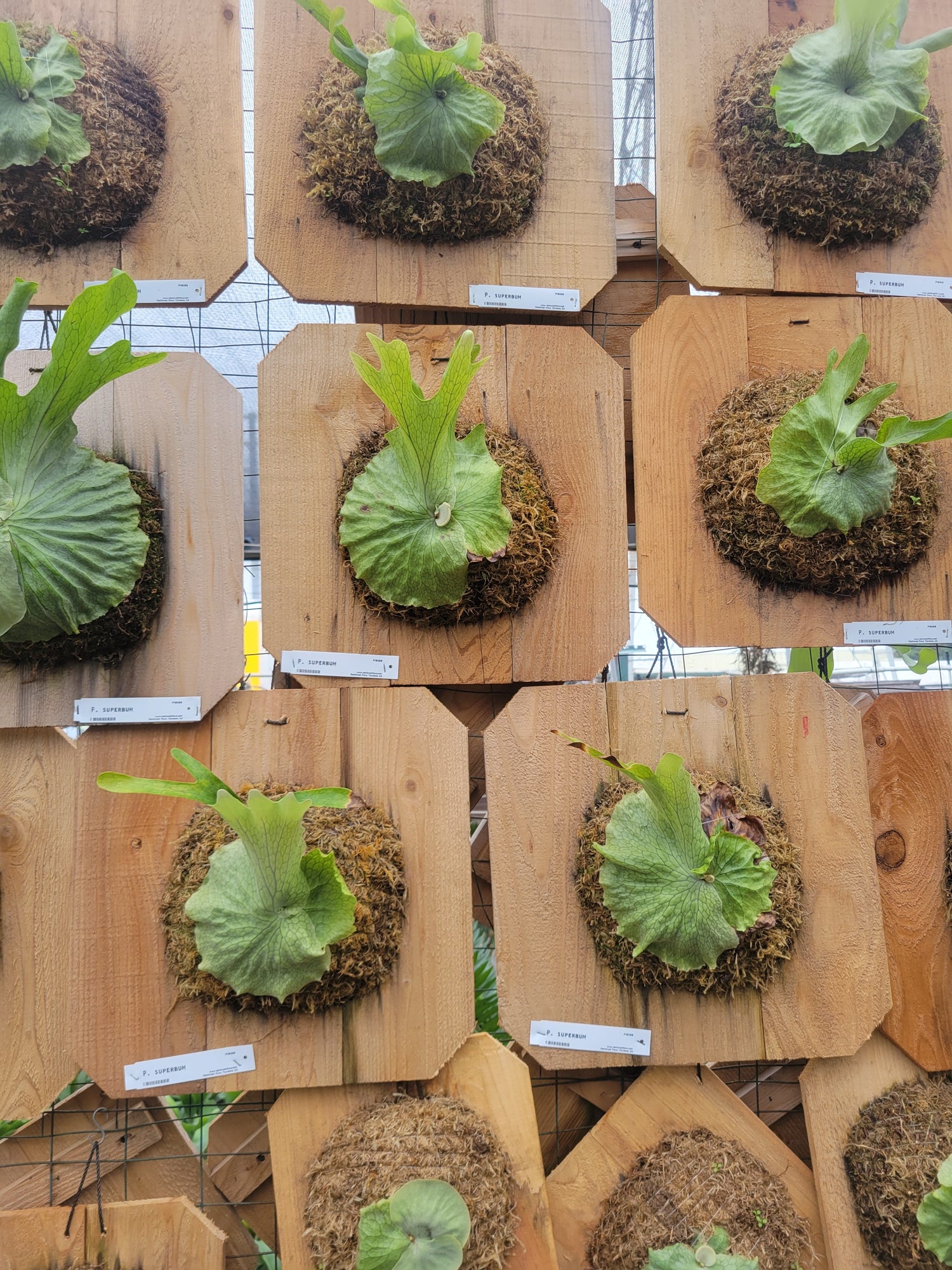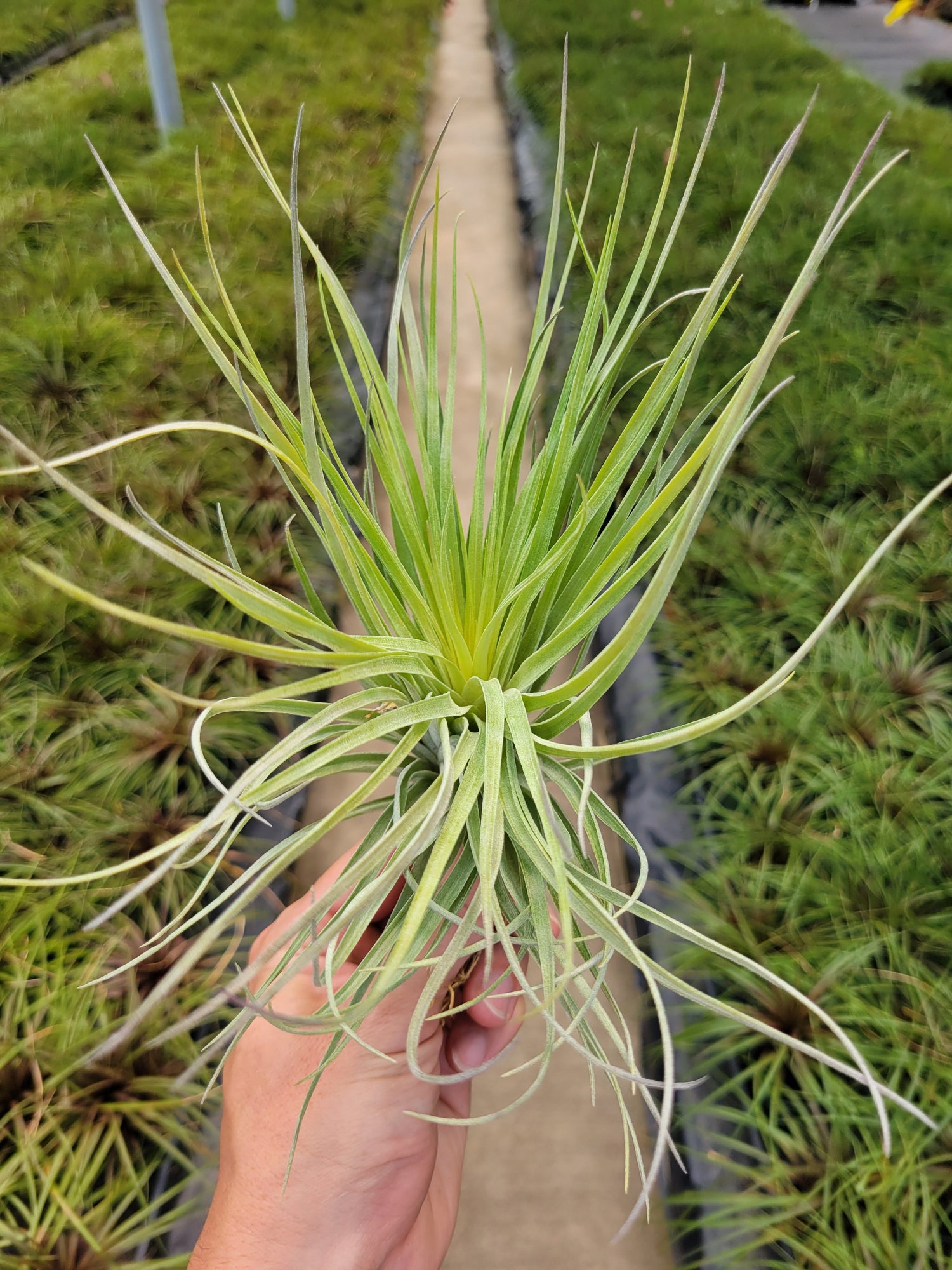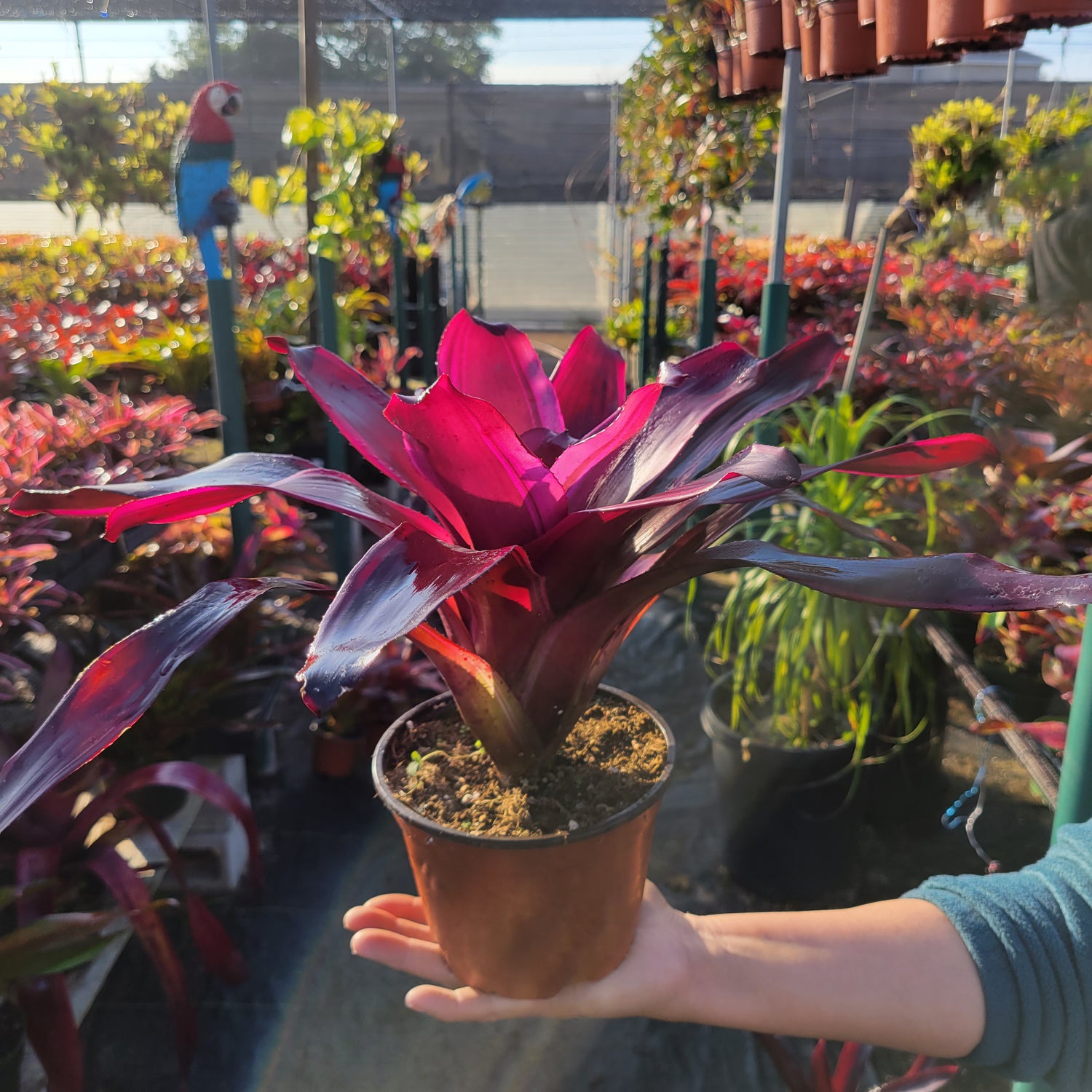Tillandsia Care FAQ
Your Airplant Questions Answered
Is every "airplant" a Tillandsia?
Yes, all true airplants belong to the genus Tillandsia, though not all Tillandsias are commonly called airplants. The term "airplant" specifically refers to Tillandsia species that grow without soil. These fascinating plants are part of the Bromeliad family, which includes pineapples and Spanish moss. While you might see other plants marketed as "air plants" (like some orchids or epiphytic ferns), true airplants are always Tillandsias.
What exactly is a Tillandsia?
Tillandsias are remarkable plants that grow without soil. In nature, they grow on trees, rocks, and even cliffs, using their roots mainly for anchoring rather than feeding. Unlike most plants, which absorb nutrients through their roots, Tillandsias absorb water and nutrients through specialized scales (called trichomes) on their leaves. Think of them as nature's ultimate adaptors—they've evolved to thrive in places where most plants couldn't survive.
How often should I water my airplant?
This depends on your specific plant and environment. Desert-loving species might need water just once or twice a week, while tropical types appreciate 2-3 soakings weekly. The best approach is to soak your plant for about 20-30 minutes, shake off excess water, and let it dry completely within 4 hours. If you live in a hot, dry climate, you'll need to water more frequently. Watch your plant - if the leaves start to curl more than usual or feel softer than normal, it's probably thirsty.
Can I just mist my airplant instead of soaking it?
While misting can supplement your plant's water needs, it shouldn't be the only source of water. Think of it like trying to stay hydrated by walking through a light fog - you might get a little moisture, but it's not enough to truly thrive. Soaking allows the plant's trichomes to fully absorb the water they need.
Why did my airplant rot even though I wasn't overwatering?
Rot often occurs when water gets trapped in the base of the plant. Even if you're watering correctly, if water sits in the crown or between leaves for too long, it can cause rot. After soaking, turn your plant upside down and gently shake out any excess water. Good air circulation is crucial for quick drying.
What kind of light do airplants need?
Most airplants thrive in bright, indirect light. The silvery, fuzzy species (like Tillandsia tectorum) can handle more direct sun because their trichomes act like little sunscreens, reflecting excess light. Greener species prefer moderate light. If your plant's leaves start browning at the tips or looking bleached, it's getting too much light. If it's growing soft or stretched out, it needs more light.
What should I do with my airplant's roots? Is it okay to remove them?
Unlike typical plants, Tillandsia roots serve primarily as anchors rather than for nutrient absorption. While it's safe to trim them, keeping the roots can help your airplant establish itself on mounting surfaces and provide extra stability. If you do need to remove roots, use clean, sharp scissors and cut them close to the base. Remember that healthy roots can also indicate a happy plant, so there's usually no need to remove them unless they're dead or in the way of your display.
Why are some of my airplants fuzzy and others smooth?
The fuzziness comes from those specialized scales (trichomes) we mentioned earlier. Desert-adapted species typically have more pronounced trichomes, giving them that silvery, fuzzy appearance. These trichomes help reflect intense sunlight and capture moisture from the air. Smoother, greener species usually come from more humid environments where they don't need as much protection from the sun or help gathering water.
What's the best way to display airplants indoors?
The key is balancing aesthetics with your plant's needs. Choose a spot with bright, indirect light and good air circulation. Avoid placing them in terrariums unless you're prepared to monitor humidity levels carefully. Many people create beautiful displays by mounting plants on driftwood or arranging them in decorative bowls. Just remember that wherever you place them, they'll need to be able to dry quickly after watering.
Can I mount my airplant on anything?
Almost anything! Wood, rocks, shells, cork, and ceramic are all popular mounting materials. Just avoid copper wire, as it's toxic to the plants. Some species, like Tillandsia bulbosa, actually prefer growing sideways or upside down, which mimics their natural growth pattern. When mounting, consider how water will drain away from the plant's base.
My airplant is blooming! What happens next?
Congratulations! Each airplant typically blooms once during its mature growth phase. The flowers can last from a few days to several months, depending on the species. After blooming, the plant will start producing pups (baby plants). Let these grow to about one-third the size of the parent plant before carefully separating them.
Do airplants die after flowering?
No, airplants don't die immediately after flowering, but they do follow a unique life cycle. After blooming, the mother plant will gradually begin to decline while producing pups (baby plants) from its base. This process can take months or even years, during which the mother plant continues to live and support its offspring. Most species produce multiple pups, ensuring the next generation thrives. While the original plant will eventually die, it lives on through its pups, which can be separated and grown as independent plants once they reach about one-third the size of the parent.
Are airplants good for improving air quality?
While airplants do photosynthesize and exchange gases with their environment like all plants, their primary value for air quality comes from their natural filtering process. As epiphytes that naturally grow in tree canopies, Tillandsias have evolved to capture airborne particles and moisture through their trichomes. However, you would need a large number of airplants to make a measurable difference in indoor air quality. Their greatest environmental benefit comes from their role in natural ecosystems, where they provide habitat for small creatures and help cycle nutrients in their native environments.
Help! My airplant's leaves are turning brown and crispy at the tips. What's wrong?
Brown, crispy tips usually mean your plant is dehydrated. This can happen from not watering enough, but it can also occur if your plant isn't absorbing water effectively. Make sure you're soaking long enough, using the right kind of water (no softened water), and that your plant has good air circulation to dry properly after watering.
Should I use fertilizer on my airplant?
While airplants can survive without fertilizer, they'll grow better and produce more pups with occasional feeding. Use a water-soluble fertilizer diluted to quarter strength once a month during the growing season. Think of it as giving your plant a vitamin supplement rather than a full meal. Rainforest Flora has developed Epiphyte’s Delight, a specially formulated fertilizer to meet the needs of airplants and staghorn ferns.

Platycerium
Staghorn Fern Care Guide
Transform your space with the architectural grandeur genus Platycerium, commonly known as "staghorn ferns."
These living sculptures bring the Australian rainforest canopy into your home or garden, offering stunning focal points that evolve over years of careful cultivation.

Tillandsia
Airplant Care Guide
Pair text with an image to focus on your chosen product, collection, or blog post. Add details on availability, style, or even provide a review.

Neoregelia
Neoregelia Care Guide
Pair text with an image to focus on your chosen product, collection, or blog post. Add details on availability, style, or even provide a review.
